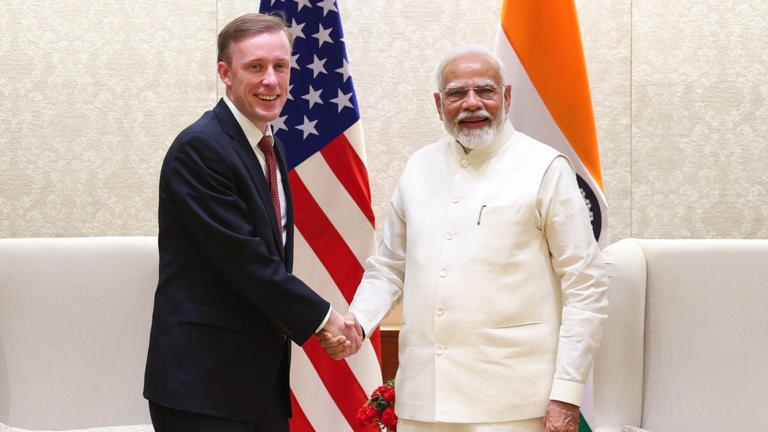US to Remove Indian Nuclear Firms from 'Entities List,' Paving Way for Robust Civil Nuclear Trade and Research

In a landmark move poised to redefine India-US relations in the nuclear energy domain, the United States is finalizing steps to remove key Indian nuclear entities from its restricted "entities list." This decision, announced by US National Security Adviser Jake Sullivan during his visit to India, marks a pivotal step towards enhancing civil nuclear cooperation between the two nations, which have long aspired to deepen their partnership in this critical sector.
Breaking Down the 'Entities List' Removal
For decades, the inclusion of Indian nuclear companies on the US "entities list" imposed significant trade and research restrictions. Companies on this list were barred from accessing American nuclear technology, expertise, and materials, effectively hampering collaboration. However, the Biden administration's decision to remove these restrictions underscores the growing trust and shared vision between the two democracies.
Speaking at the Indian Institute of Technology, Delhi, Sullivan emphasized the transformative potential of this move. “This will be an opportunity to turn the page on some of the frictions of the past and create opportunities for entities that have been on restricted lists to enter into deep collaboration with the United States," he said.
The removal of Indian entities from the restricted list will unlock opportunities for Indian and American firms to jointly explore civil nuclear projects, foster scientific research, and develop advanced nuclear technologies. It also signals a commitment to fortifying the India-US strategic partnership, particularly in energy security and clean energy transitions.
Boosting India's Nuclear Ambitions
India's nuclear energy sector is critical to its energy strategy, especially as the country aims to reduce its dependence on fossil fuels. By 2030, India seeks to generate 50% of its electricity from non-fossil fuel sources, with nuclear power expected to play a significant role.
This development comes at a crucial juncture, as India plans to ramp up its nuclear capacity through the construction of indigenous and collaborative reactor projects. With access to American technology, expertise, and investment, Indian firms can accelerate the adoption of advanced reactor designs, including Small Modular Reactors (SMRs), which are more efficient and cost-effective than traditional nuclear reactors.
Additionally, US-India cooperation is likely to extend to areas such as nuclear safety protocols, waste management solutions, and grid integration. These advancements could position India as a global leader in sustainable nuclear energy development while creating significant business opportunities for US companies.
A Multi-Billion-Dollar Opportunity
The decision to remove trade restrictions is expected to catalyze a wave of investments in the nuclear sector. Industry experts anticipate the move could open a market worth billions of dollars, benefiting firms on both sides. For US companies, it provides access to one of the world’s fastest-growing energy markets. For Indian entities, it offers cutting-edge technology and expertise to bolster the country’s nuclear energy infrastructure.
Implications for Global Energy Goals
Beyond bilateral trade, this collaboration aligns with global efforts to combat climate change and transition to sustainable energy sources. Nuclear power, as a low-carbon energy source, is pivotal to reducing greenhouse gas emissions. Enhanced India-US nuclear cooperation can serve as a model for other nations seeking to balance energy demands with environmental commitments.
Strategic Partnership Strengthened
This step is more than just a regulatory change; it is a testament to the deepening strategic partnership between India and the United States. By removing long-standing barriers, both nations are signaling their intent to work together on issues of mutual interest, including energy security, technological innovation, and climate change mitigation.
As the paperwork for this historic move nears completion, the stage is set for a new era of collaboration. This decision not only boosts India’s nuclear energy ambitions but also cements the India-US partnership as a cornerstone of global efforts to ensure a sustainable energy future.



